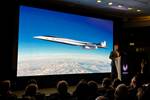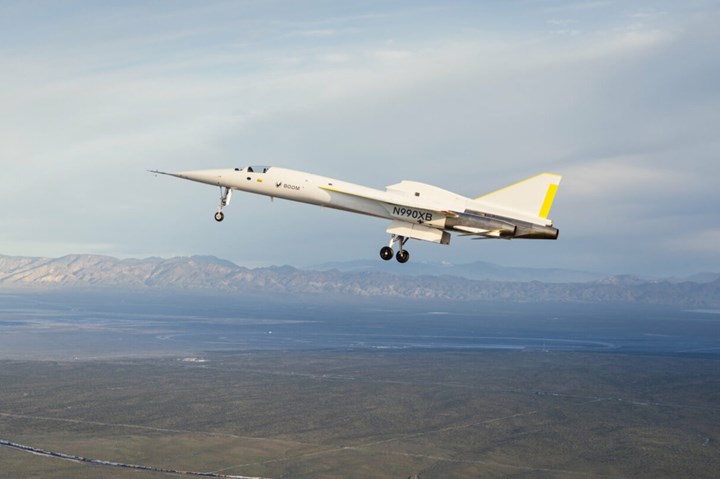XB-1 supersonic jet authorized for flights exceeding Mach 1
FAA issues special flight authorization (SFA) for Boom Supersonic test flights, planned for later this year in the Black Mountain Supersonic Corridor in Mojave, California.
Boom Supersonic’s (Denver, Colo., U.S.) XB-1 has secured special flight authorization (SFA) to exceed Mach 1 from the Federal Aviation Administration (FAA). XB-1 test flights will continue to be conducted in the R-2508 Complex and supersonic operations will occur in the Black Mountain Supersonic Corridor and in a portion of the High Altitude Supersonic Corridor within the R-2515 airspace, which has been used extensively for research and military supersonic aeronautical operations.
XB-1’s SFA follows a thorough review and Environmental Assessment, and extends to specified chase plane aircraft, which will trail XB-1 to observe, monitor and record safety of flight. The SFA comes just weeks after XB-1 supersonic jet, took flight at the Mojave Air & Space Port in Mojave, California, in March.
Now that XB-1 has successfully completed its first flight and received authorization to fly supersonic, the team will systematically expand the flight envelope to confirm its performance and handling qualities through and beyond Mach 1. This includes in-flight checks of all systems, as well as multiple test points demonstrating safe margin to flutter (vibration) boundaries. There are a total of 10-20 flights planned before reaching supersonic speeds.
Currently, the team is looking forward to the second flight, where the landing gear will be retracted and extended. “We anticipate taking it up to 16 degrees angle of attack (AOA), and will also evaluate the sideslip which will expand the envelope in order to give us a little bit more margin on a nominal landing. It will also be the first time the ‘dampers’ — or stability augmentation system — is used,” says test pilot Tristan “Geppetto” Brandenberg.
The third flight will evaluate XB-1’s flutter excitation system. Flutter is a self-excited instability which can occur because of interactions between aerodynamic and inertial forces.
“Right now, the plan is multiple supersonic flights,” notes Brandenburg. “We plan to do Mach 1.1, 1.2 and 1.3 on the first three. The reason for that is each one of those points takes so much airspace that you only have time to do one of them, so we will be on condition for several minutes, we’ll get a flying qualities and handling qualities block, and have to come back home.”
Related Content
-
Materials & Processes: Composites fibers and resins
Compared to legacy materials like steel, aluminum, iron and titanium, composites are still coming of age, and only just now are being better understood by design and manufacturing engineers. However, composites’ physical properties — combined with unbeatable light weight — make them undeniably attractive.
-
PEEK vs. PEKK vs. PAEK and continuous compression molding
Suppliers of thermoplastics and carbon fiber chime in regarding PEEK vs. PEKK, and now PAEK, as well as in-situ consolidation — the supply chain for thermoplastic tape composites continues to evolve.
-
Cryo-compressed hydrogen, the best solution for storage and refueling stations?
Cryomotive’s CRYOGAS solution claims the highest storage density, lowest refueling cost and widest operating range without H2 losses while using one-fifth the carbon fiber required in compressed gas tanks.

















